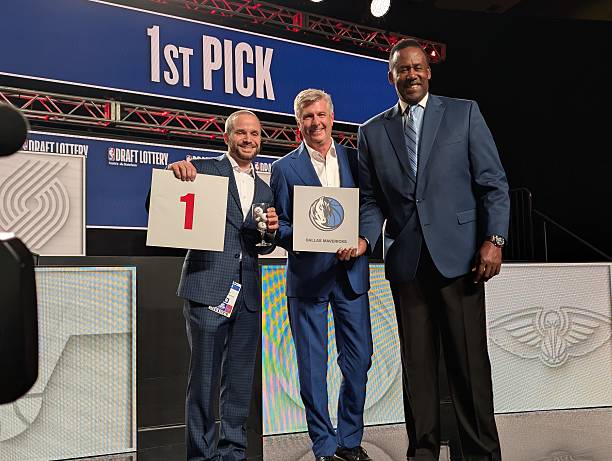Colleges That Have Produced the Most NBA First-Round Talent

Colleges That Have Produced the Most NBA First-Round Talent
Since the NBA began its annual draft in 1947, more than 1,500 players have been chosen in the first round. A considerable majority (roughly 90%) have hailed from Division I college basketball programs. The presence of powerhouse schools in the draft has become a constant, with many elite talents passing through campuses marked by a rich basketball tradition and—often—a preference for blue uniforms.
Betting Tips & Recent NCAA Stars and No. 1 Picks
The connection between college basketball and the NBA draft intersects with the wider world of sports betting, where fans often wager on tournament outcomes, draft positions and player props. As interest increases, many pivot to online platforms for sports odds and to investigate other alternatives like virtual table games and slots. This metamorphosis has stimulated curiosity in low-stakes alternatives, particularly those offering a casino $5 deposit, where users engage casually without a major financial commitment.
The 2024 NBA Draft, held on June 26, showcased an increasing international influence, as the Atlanta Hawks chose French prospect Zaccharie Risacher with the top overall selection. Following closely was Alex Sarr (also from France), who was picked second by the Washington Wizards. The first college player taken was Kentucky’s Reed Sheppard, landing at third overall with the Houston Rockets.
Looking back, this tendency of international and collegiate balance has continued year after year. In 2023, San Antonio chose Victor Wembanyama, another French standout, at No. 1. The highest-ranked NCAA player that year was Brandon Miller from Alabama, who went second to the Charlotte Hornets. Duke’s Paolo Banchero was the top selection in 2022, chosen by the Orlando Magic, marking yet another high-profile leap from college to the pros.
In 2021, Oklahoma State’s Cade Cunningham became the first player from his school to ever be picked first overall, selected by the Detroit Pistons. The following year, Georgia guard Anthony Edwards went No. 1 to the Minnesota Timberwolves, becoming the Bulldogs' first top overall selection and their ninth all-time first-round pick.
Top Schools in Producing NBA First-Round Talent
Some college programs consistently act as pipelines to the NBA. Kentucky leads all schools with 60 players selected in the first round of the draft. Duke follows with 56, while North Carolina is close behind at 54. These three schools alone represent a large chunk of college basketball's contribution to the NBA talent pool.
UCLA—a program synonymous with success—comes in fourth with 43 first-round selections. Kansas has also made a strong showing over the decades, with 36 players chosen in the first round. Big Ten programs such as Michigan, Indiana and Ohio State each boast between 25 and 30 first-rounders, demonstrating the depth of talent within that conference.
Meanwhile, programs like Arizona, Louisville and Syracuse have also maintained a strong presence, each contributing over 20 players to the league’s early rounds. Equally, schools like Connecticut, Michigan State and Notre Dame round out the upper tier of NBA-producing programs, each with 21 or more first-round picks.
Conferences That Dominate Draft Night
The Atlantic Coast Conference (ACC) has long been regarded as the epicenter of college basketball excellence, particularly when it comes to NBA prospects. Through the end of the 2022 draft, the ACC had seen 285 of its players chosen in the first round. That figure represents about one-fifth of all Division I talent selected in that span, underscoring the conference's reputation for developing elite players.
Following closely behind are the Big Ten, Southeastern Conference (SEC) and Pac-12—all of which have delivered waves of professional talent. These conferences benefit from a combination of coaching pedigree, recruitment networks and competitive schedules that prepare athletes for the transition to the next level.
Schools With the Most No. 1 Overall Picks
Duke stands out as the program with the most No. 1 overall selections in NBA history, producing five top picks. These players span decades of the draft, reflecting sustained excellence across multiple coaching eras. Kentucky has produced three top picks, while North Carolina has seen two of its former players go first overall.
Several other programs have had two players selected first overall, including UCLA, Kansas, Indiana and Michigan. Maryland and UNLV are also on that list, alongside LSU, Georgetown, Utah, Houston, Cincinnati, Purdue, Kansas State, West Virginia and Duquesne. Each of these schools has, at some point, developed talent capable of headlining an NBA draft.
The Blueblood Advantage
A quick glance at the draft history reveals that college basketball's "blueblood" programs—the traditional powerhouses with multiple national titles and long-standing reputations—are often the same institutions sending players to the NBA’s first round. The top 10 colleges in first-round draft production account for more than half of all NCAA championships, reinforcing the link between college dominance and professional opportunity.
This advantage is not solely about winning; it's about visibility, coaching and resources. High school stars often choose these programs knowing the path to the NBA is well-trodden and the national spotlight is always on.
Emerging Contenders and Consistent Contributors
Outside of the usual suspects, schools like Georgia Tech, Texas, Alabama, LSU, NC State, Minnesota and St. John's have also carved out spots among the top 25 producers of first-round talent. Although not always regarded as elite programs on the same level as Duke or Kentucky, their consistent output of NBA-ready athletes points to effective scouting, strong development programs and competitive conference schedules.
Interestingly, schools that produce multiple first-round picks are not always those winning national titles. Some programs specialize in player development over championship runs, often reflecting different institutional priorities or program strategies.
Draft Trends and Future Outlook
The heightened presence of international players selected at the top of the draft has recalibrated the terrain somewhat; however, Division I college basketball still serves as a major gateway to the NBA, particularly for American players. With name, image and likeness (NIL) deals now part of the collegiate system, the dynamics of draft preparation and athlete retention are shifting; however, the historical data still points to the NCAA as a critical launching pad for future stars.


